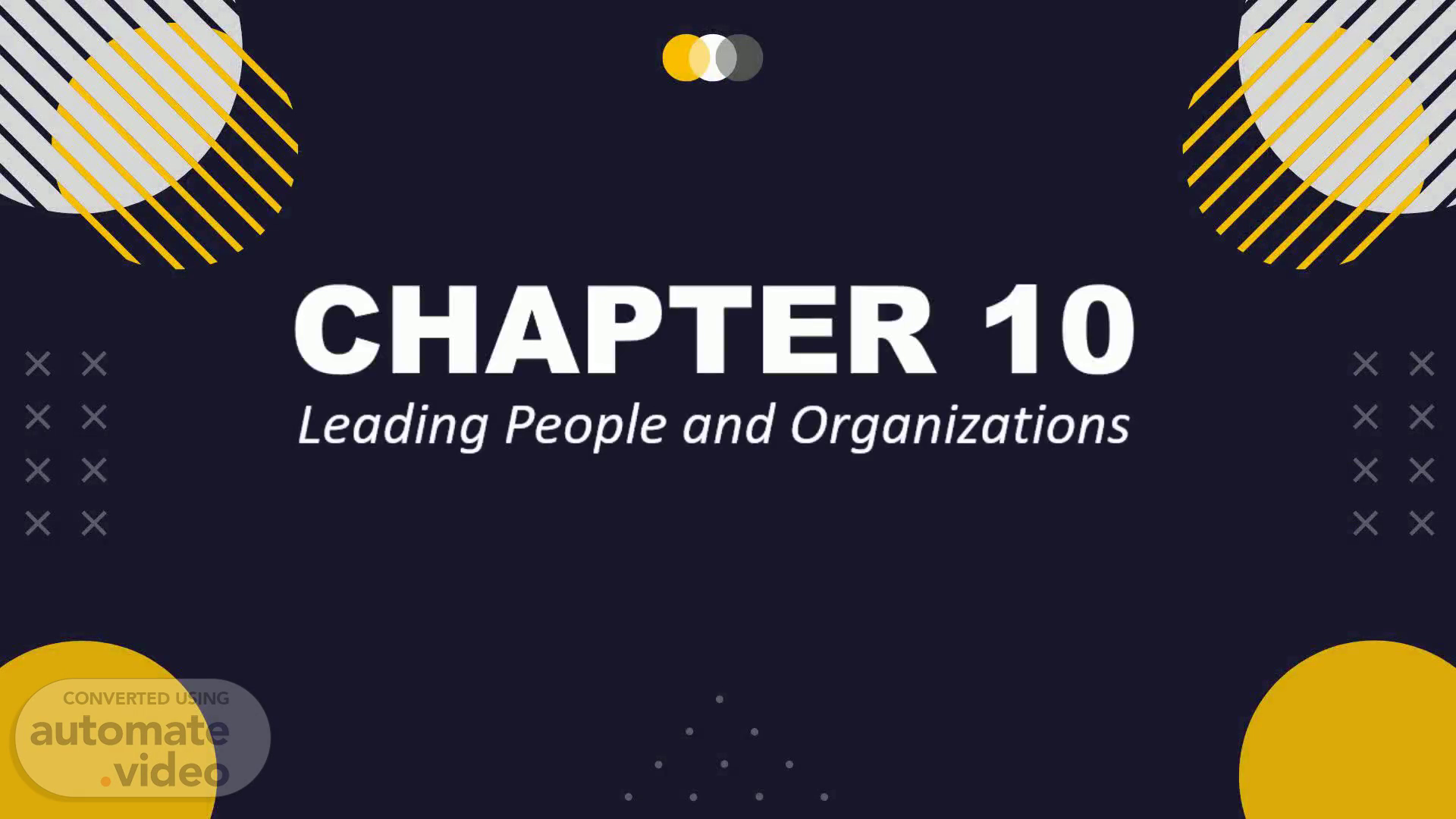Scene 1 (0s)
[Audio] CHAPTER 10 Leading People and Organizations.
Scene 2 (8s)
[Audio] LEARNING OBJECTIVES Define what leadership is and identify traits of effective leaders. Identify leadership skills Learn the position of trait approaches in the history of leadership studies. Explain the traits that are associated with leadership. Discuss the limitations of trait approaches to leadership. Explain the behaviors that are associated with leadership. Identify the three alternative decision-making styles leaders use and the conditions under which they are more effective. Discuss the limitations of behavioral approaches to leadership..
Scene 3 (49s)
[Audio] WHAT IS LEADERSHIP? LEADERSHIP may be defined as the act of influencing others to work toward a goal. Leaders exist at all levels of an organization. Some leaders hold a position of authority and may use the power that comes from their position, as well as their personal power, to influence others; they are called FORMAL LEADERS. In contrast, INFORMAL LEADERS are without a formal position of authority within the organization but demonstrate leadership by influencing others through personal forms of power. Formal leadership is where a person is officially designated as the leader of a group. Examples of this kind of leadership are CEO of a company, a teacher at a school, the captain of a sporting team and the head of a department informal leader is a colleague who's well known for their intelligence, wisdom and interpersonal qualities. This person isn't necessarily a high-ranking member of the organization, but others respect them and typically go to them for advice and knowledge about procedures.
Scene 4 (1m 55s)
[Audio] Leadership is the first of five facets constituting a manager's leading function in the P-O-L-C framework. For an effective management, leadership must be present..
Scene 5 (2m 14s)
[Audio] Leaders do not rely on the use of force to influence people. Instead, people willingly adopt the leader's goal as their own goal. If a person is relying on force and punishment, the person is a dictator, not a leader. leaders as at least partly responsible for their team's or company's success and failure When people and organizations fail, managers and CEOs are often viewed as responsible..
Scene 6 (2m 44s)
[Audio] 3 LEADERSHIP SKILLS ACCORDING TO ROBERT KATZ.
Scene 8 (8m 20s)
[Audio] Who Is a Leader? Trait Approaches to Leadership The earliest approach to the study of leadership sought to identify a set of traits that distinguished leaders from non-leaders. Since leaders is not an easy job. There are traits that set leaders apart from non-leaders. These are Openness, Conscientiousness, Extraversion, Agreeableness and Neuroticism. These means also that leaders must be curious, original, intellectual, creative, and open to new ideas. Leaders must be organized, systematic, punctual, achievement oriented, and dependable. Being outgoing, talkative, sociable is also an important trait of leader. At the same time, leaders must also be warm, trusting and kind and not moody as much as possible..
Scene 9 (9m 16s)
[Audio] As leaders are role model, it is very important that they have integrity, Intelligence, Extraversion, Conscientious, Open to experience and have self-esteem. Leaders are also expected to help others, open to ask question, motivate others, unite groups, provide guidance, establish goals, be accountable at all times and a good listener..
Scene 10 (9m 39s)
[Audio] What Do Leaders Do? Behavioral Approaches to Leadership. Leaders are also expected to help others, open to ask question, motivate others, unite groups, provide guidance, establish goals, be accountable at all times and a good listener..
Scene 11 (9m 58s)
[Audio] Behaviors involving structuring the roles of subordinates, providing them with instructions and behaving in ways that will increase the performance of the group. (Also called initiating structure.) Behaviors that include showing concern for employee feelings and treating employees with respect. (Also called consideration.).
Scene 12 (10m 21s)
[Audio] Behavioral approaches to leadership showed that task-oriented and people-oriented behaviors are two key aspects of leadership..
Scene 13 (10m 31s)
[Audio] LEADER DECISION MAKING Another question behavioral researchers focused on was how leaders actually make decisions, and the influence of decision-making styles on leader effectiveness and employee reactions. Three types of decision-making styles were studied. In authoritarian decision making, leaders make the decision alone without necessarily involving employees in the decision-making process. When leaders use democratic decision making, employees participate in the making of the decision. Finally, leaders using laissez-faire decision making leave employees alone to make the decision; the leader provides minimum guidance and involvement in the decision..
Scene 14 (11m 16s)
x x x x x x x x x x x x x x. CHAPTER 10. 10.2 What Do Leaders Do? Behavioral Approaches to Leadership..
Scene 15 (11m 22s)
inox )INVHI.
